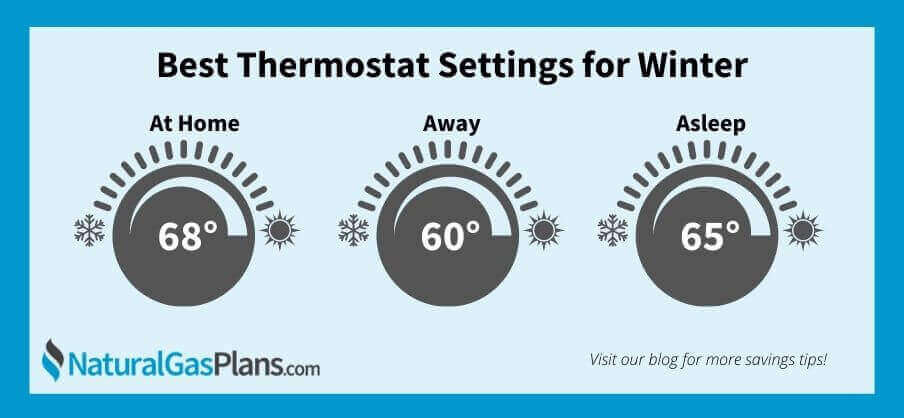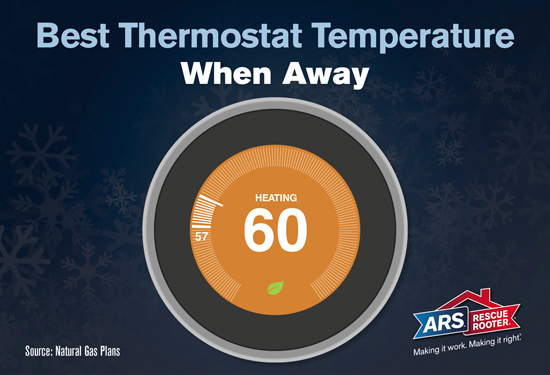Best Temperature To Set Heater In Winter

Winter's chill brings with it the inevitable surge in energy bills, primarily due to heating costs. Setting your thermostat optimally can significantly impact your wallet and the environment. This article delves into the best temperature settings for your heater in winter, exploring strategies for homeowners, businesses, and smart home enthusiasts to maximize energy efficiency and reduce costs.
Understanding the Energy Star Recommendations
The U.S. Environmental Protection Agency (EPA) through its Energy Star program provides guidelines for energy-efficient living. Their recommendations are a great starting point for understanding optimal thermostat settings during winter. According to Energy Star, the ideal temperature to set your thermostat while you’re home and awake is 68 degrees Fahrenheit (20 degrees Celsius). Setting your thermostat lower while you’re asleep or away can save you even more energy.
Why 68 degrees? This temperature represents a balance between comfort and energy consumption. While personal preferences vary, lowering the temperature even a few degrees can lead to substantial savings. For every degree you lower your thermostat for eight hours a day, you can save around 1% on your heating bill, according to the U.S. Department of Energy. This seemingly small adjustment adds up significantly over the course of a winter season.
Optimizing Temperature Settings for Different Scenarios
The "best" temperature is not a one-size-fits-all answer. It depends on various factors including occupancy, insulation, and personal comfort levels.
Homeowners: Balancing Comfort and Cost
For homeowners, consider these scenarios:
- When you're home and awake: Maintain 68°F (20°C). Use blankets or sweaters to increase your comfort level if needed.
- When you're asleep: Lower the thermostat to 60-64°F (15-18°C). This aligns with your body's natural temperature regulation during sleep and minimizes energy waste.
- When you're away: Set the thermostat to 55°F (13°C) or lower if you'll be gone for extended periods. This prevents pipes from freezing and minimizes energy use.
Businesses: Efficiency in Commercial Spaces
Commercial buildings often face unique heating challenges due to their size and occupancy patterns. Implementing a strategic temperature management plan is crucial.
- During business hours: Maintain 68-70°F (20-21°C) depending on the type of work being performed. Ensure adequate insulation and weather stripping to prevent drafts.
- After hours and weekends: Reduce the temperature to 60-62°F (15-17°C). Program thermostats to automatically adjust based on occupancy schedules. Consider motion sensors to optimize heating in specific zones.
Smart Home Enthusiasts: Leveraging Technology for Control
Smart thermostats offer advanced features that can significantly enhance energy savings. These devices learn your heating patterns and adjust temperatures automatically.
- Programmable Schedules: Create customized heating schedules based on your daily routines.
- Geofencing: Automatically lower the temperature when you leave home and raise it when you return.
- Remote Control: Adjust the temperature from anywhere using your smartphone or tablet.
- Energy Reports: Track your energy usage and identify areas for improvement.
The ROI of Energy-Efficient Heating Systems
Investing in energy-efficient HVAC systems can provide a substantial return on investment (ROI) over the long term. Consider the following options:
- High-Efficiency Furnaces: Look for furnaces with an Annual Fuel Utilization Efficiency (AFUE) rating of 90% or higher. These furnaces convert a greater percentage of fuel into usable heat, reducing energy waste.
- Heat Pumps: Heat pumps are a highly efficient alternative to traditional furnaces, especially in moderate climates. They transfer heat from the outside air (even in cold temperatures) into your home. Look for models with a high Heating Season Performance Factor (HSPF).
- Zoned Heating Systems: Zoned heating allows you to control the temperature in different areas of your home independently. This prevents you from heating rooms that aren't in use.
Example ROI Calculation: Upgrading from an 80% AFUE furnace to a 95% AFUE furnace could save you 15% on your heating bill annually. If your current heating bill is $1,000 per year, you could save $150 per year. Over the lifespan of the furnace (15-20 years), this could result in significant savings. Furthermore, many utility companies offer rebates and incentives for installing energy-efficient equipment, further reducing the initial cost.
The Role of Insulation and Weatherization
No matter how efficiently you heat your home, if it's poorly insulated, you'll be losing a significant amount of heat. Proper insulation and weatherization are essential for maximizing energy savings.
- Insulation: Insulate your attic, walls, and floors to prevent heat loss. The U.S. Department of Energy provides recommended insulation levels for different climates.
- Weather Stripping: Seal gaps and cracks around windows and doors to prevent drafts.
- Caulking: Caulk around pipes, wires, and other openings to prevent air leaks.
- Window Treatments: Use heavy curtains or drapes to insulate windows and prevent heat loss.
Consider having a professional energy audit to identify areas in your home that need improvement. Many utility companies offer free or discounted energy audits.
Smart HVAC Integration for Enhanced Control
Integrating your HVAC system with other smart home devices can further enhance energy efficiency and convenience. For example:
- Smart Sensors: Use temperature and humidity sensors in different rooms to optimize heating and cooling.
- Smart Lighting: Integrate your lighting system with your thermostat to automatically adjust the temperature when lights are turned on or off.
- Voice Control: Control your thermostat using voice commands through smart speakers like Amazon Echo or Google Home.
By connecting your HVAC system to a smart home platform, you can create automated routines that optimize energy usage based on your specific needs and preferences.
Available Rebates and Incentives
Many government agencies and utility companies offer rebates and incentives for energy-efficient HVAC upgrades and home improvements. These programs can significantly reduce the initial cost of these projects.
Here's how to find out what's available:
- Database of State Incentives for Renewables & Efficiency (DSIRE): This website provides a comprehensive database of energy efficiency incentives available in your state.
- Utility Company Websites: Check your local utility company's website for information on rebates and incentives.
- Federal Tax Credits: The federal government offers tax credits for certain energy-efficient home improvements. Consult with a tax professional for more information.
Always check the eligibility requirements and application deadlines before starting any project.
Working with HVAC Contractors to Optimize Efficiency
Choosing the right HVAC contractor is crucial for ensuring your system is properly installed and maintained. Look for contractors who are licensed, insured, and experienced in installing energy-efficient equipment. Consider these questions when selecting a contractor:
- Are they certified by organizations like NATE (North American Technician Excellence)?
- Do they have experience installing the specific type of equipment you're interested in?
- Can they provide references from satisfied customers?
- Do they offer energy audits and recommendations for improving energy efficiency?
A qualified HVAC contractor can help you select the right equipment for your home or business, install it properly, and provide ongoing maintenance to ensure it operates at peak efficiency.
Conclusion: Small Changes, Big Savings
Optimizing your thermostat settings in winter is a simple yet effective way to reduce energy costs and minimize your environmental impact. By following the Energy Star guidelines, leveraging smart home technology, and investing in energy-efficient equipment, you can achieve significant savings without sacrificing comfort. Remember that even small changes, like lowering your thermostat a few degrees, can add up to big savings over time. Take the time to assess your heating needs, implement energy-saving strategies, and enjoy a warmer winter without breaking the bank.
And lastly, remember to consult with a qualified professional before making any significant changes to your HVAC system. They can provide personalized recommendations based on your specific needs and ensure that your system is operating safely and efficiently.










